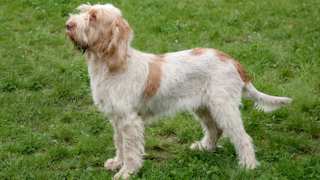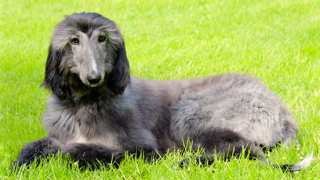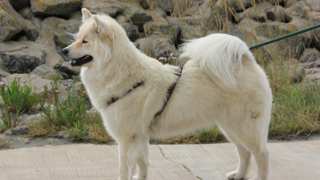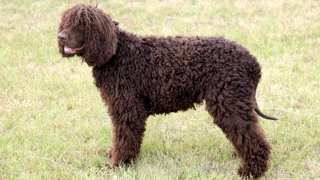Though large and fairly athletic, these dogs tend to be a bit lazy--so Pyredoodle exercise requirements aren't too extensive. Because of their intelligence, owners will need to give their Pyredoodles a variety of exercises that challenge them mentally as well as physically; these dogs are also prone to obesity, so consistent daily activity will help them keep off excess weight. Pyredoodles can also be good jogging companions--but taking these dogs for a run might require a bit of coaxing!
The typical adult Pyredoodle, depending on its age and overall activity level, will need about 45 minutes of proper exercise per day, which you can accomplish with a couple of walks or jogs and a good period of play. You can start exercising your Pyredoodle puppy at three months of age by taking it on short (5- to 7-minute) walks, then you can increase the walks' length and frequency as the puppy grows.
A few things to consider when exercising your Pyredoodle: first, puppies younger than nine months old shouldn't participate in activities that include a lot of jumping, running on hard surfaces, or navigating of stairs, as doing so can injure their still-developing joints and bones. And regardless of age, all Pyredoodles will need to be leashed when in public. These dogs can be very protective (a trait they inherit from their Great Pyrenees parents), and might be defensive and confrontational with strange people; they also have high tendencies to wander, and may run off if they have the chance. A leash will help you control your Pyredoodle in these situations. This high wandering tendency means that even when exercising in your own yard, the area will need to be securely fenced to keep the dog from running away. And finally: Pyredoodles are susceptible to bloat, an often-fatal condition caused by a dog's stomach filling with air when it "wolfs" its food; the condition occurs most often when a dog eats just before or after exercising. It's best, then, not to exercise your Pyredoodle an hour before or two hours after eating.
Precautions aside, it's important to exercise your Pyredoodle every single day. These dogs are generally happy, peaceful, and well-mannered--but if they're bored or restless they'll become frustrated, disobedient, and destructive (not to mention overweight!). Consistent exercise will be great for both the dog's and your own peace of mind. A few exercise ideas:
- Walking/Jogging: Two 20-minute walks (or 15-minute jogs) per day is a good target
- Swimming: These dogs usually love the water; start swimming with the dog when it's still a puppy
- Tug-of-War: Great indoor, rainy-day activity; use a rope or old towel
- Dog Park: If properly socialized, Pyredoodles enjoy the company of other dogs; be sure to use a leash
- Hiking: Excellent bonding excursion; bonus if you can find a remote area where the dog can be off-leash
If your Pyredoodle spends a lot of time indoors, it's a good idea to give the dog access to one or more balls or toys that will allow it to burn excess energy (which, odds are, it probably won't have much of). It's also recommended that you establish a regular exercise schedule for the dog, such as walks or jogs in the morning and evening and a play period in the afternoon.




